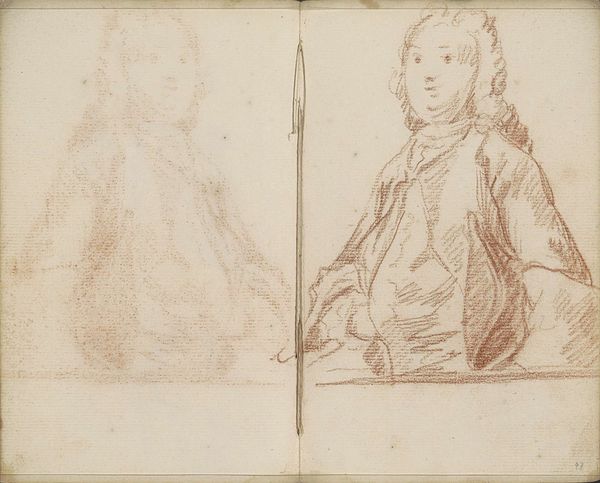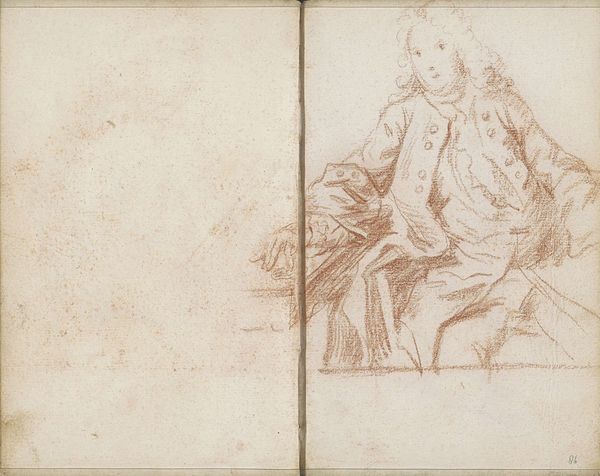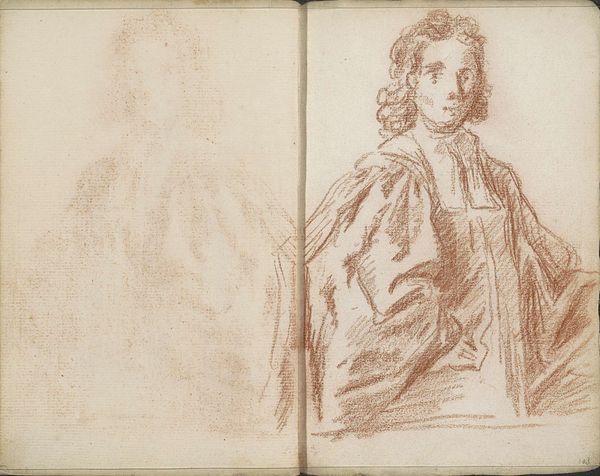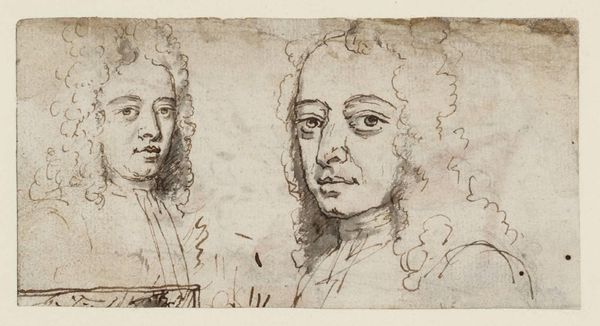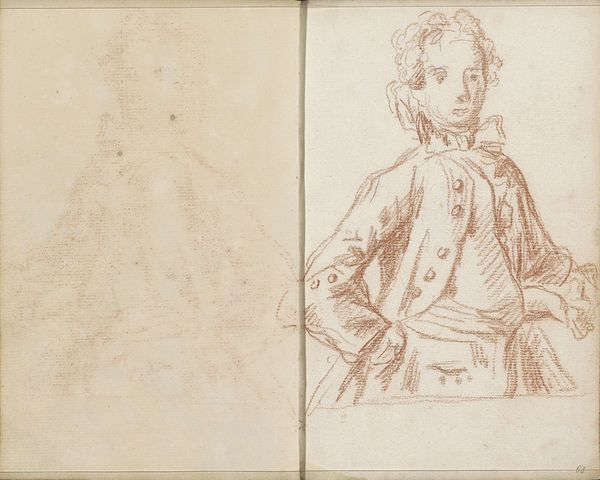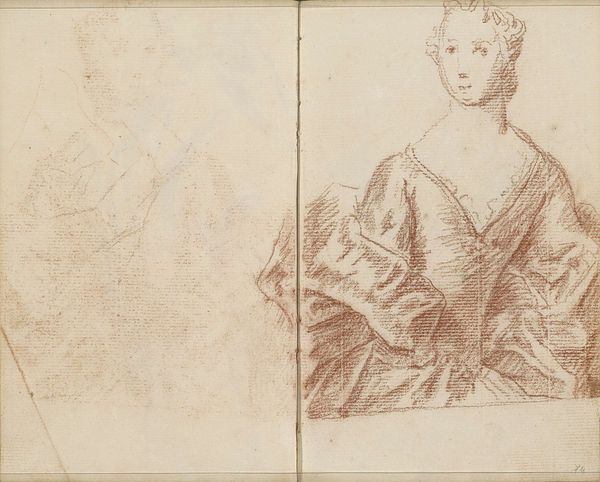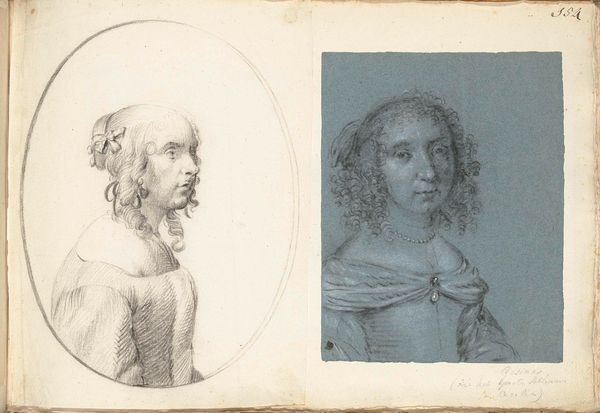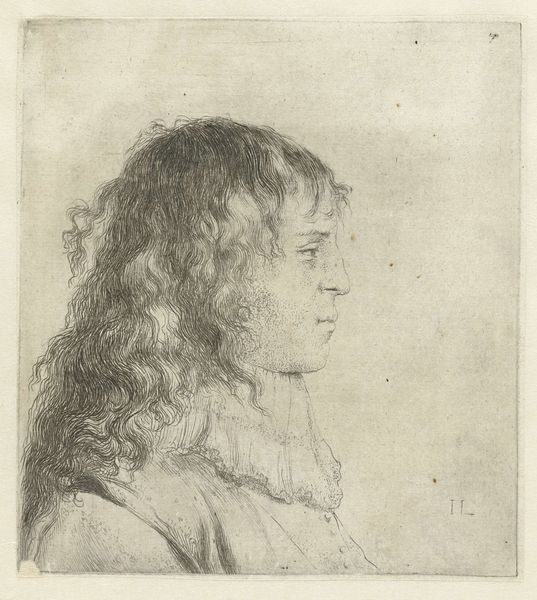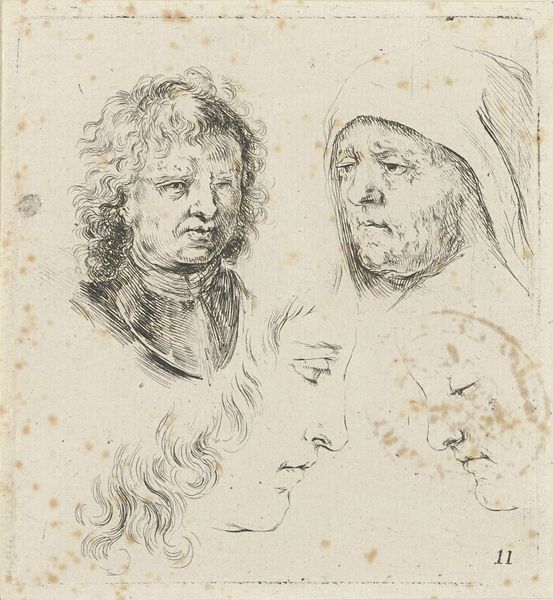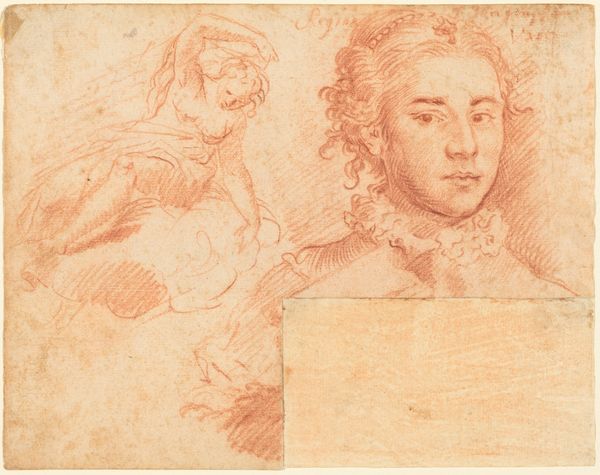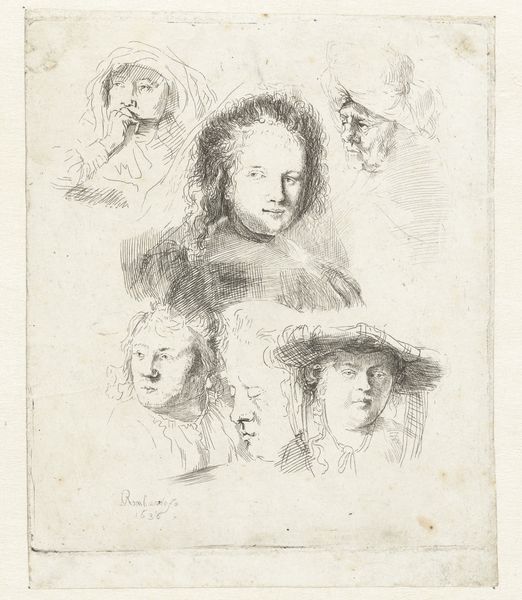
drawing, paper, pencil
#
portrait
#
drawing
#
pencil sketch
#
paper
#
pencil
Copyright: Rijks Museum: Open Domain
Curator: This captivating drawing is entitled “Portret van een onbekende man,” or “Portrait of an Unknown Man,” crafted by Petrus Johannes van Reysschoot sometime between 1710 and 1772. It’s a delicate piece rendered in pencil on paper. Editor: Oh, he looks like a phantom emerging from parchment, a wisp of memory clinging to the page! The unfinished twin hovering in the background just amplifies the feeling of fleeting presence. Curator: Indeed. The artist’s choice of materials, pencil and paper, speaks to accessibility and portability. Drawing as a practice during this period becomes increasingly democratized. It allowed for preparatory sketches and, in this instance perhaps, portraits could be created more affordably, reaching a broader segment of society beyond the traditionally elite patrons. Editor: He's all delicate curls and buttoned finery! The materiality amplifies his ephemerality, doesn’t it? As though any heavy hand could smudge him out of existence. But perhaps that's its charm. I bet Van Reysschoot captures his true spirit better precisely BECAUSE he relies on brevity! What kind of life did our mysterious man lead, I wonder? Was his smile as fleeting as his image on paper? Curator: The deliberate choice to leave one side nearly faded emphasizes the fragility of representation, alluding to the ephemeral nature of identity itself within shifting socio-economic currents. Maybe he died young, maybe lost his fortune; the “unknown” nature really invites speculation as to why we’re left only with this ghostly outline. Editor: And in its 'unfinished' state, we complete him ourselves, through conjecture! I find that thought quite romantic! The interplay of labor – both the artist's swift hand and our imaginative investment – renders the piece wonderfully alive. It’s more than a portrait; it's an invitation. Curator: An invitation that compels us to consider the means through which artistic representation, materials, and societal conditions interplay to shape and define subjects. And perhaps more powerfully, to allow them to dissolve. Editor: Leaving us with a rather poignant absence to ponder. I like that very much.
Comments
No comments
Be the first to comment and join the conversation on the ultimate creative platform.

